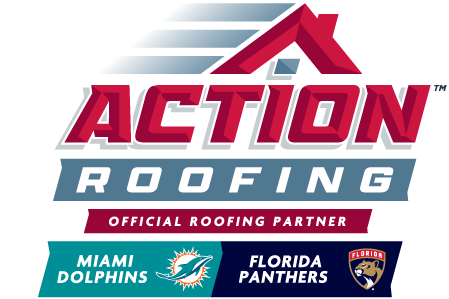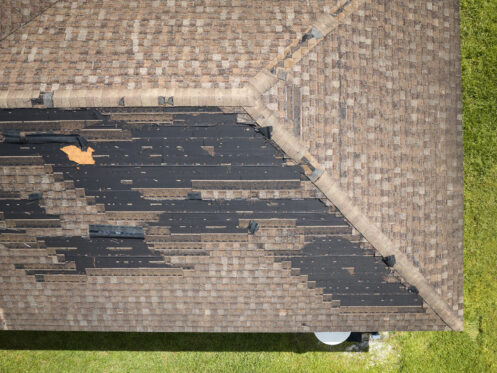Florida’s hurricane season is a time of unpredictability, bringing powerful storms that can quickly transform the sunny skies of Fort Lauderdale into intense tropical weather. With strong winds and heavy rainfall, hurricanes pose significant risks, and your roof often bears the brunt of the damage. While your roof plays a crucial role in protecting you and your family from the harsh elements, even the most well-maintained roof can suffer substantial damage during a fierce storm.
After any major storm, it’s essential to assess the condition of your roof. Damage isn’t always immediately visible, and the signs of compromised roofing can be subtle. By knowing what to look for, you can catch potential issues early.
1. Damaged or Missing Shingles
Identifying roof damage can be straightforward, especially when it comes to missing or damaged shingles. Florida’s hurricane season is notorious for strong winds that can easily tear shingles from your roof. If this happens, you’ll likely spot exposed areas vulnerable to further damage. You may even find the missing shingles scattered around your property, such as in the driveway or yard.
In other cases, high winds may not completely remove the shingles, but they can still cause significant damage. Look for shingles that are misaligned, bulging, or hanging from one corner. If you notice any of these issues, it’s essential to call roofing professionals right away. Damaged or missing shingles leave your roof vulnerable to water leaks, mold, and rot.
2. Indoor Leaks or Signs of Water Damage
When your roof is damaged, the signs won’t necessarily all be found outside. Moisture-related issues in your house can present themselves in several different ways. Most commonly, these symptoms will appear in your attic or the upper portion of your living space. During Florida’s hurricane season, keep your eyes open for dark spots on your ceilings or walls. It’s also prudent to periodically inspect the top floor of your house to search for any signs of increased moisture. If you find any indication that water is entering your home, it means that your roof is severely damaged.
3. A Musty Odor
During Florida’s hurricane season, moisture-related issues are common, but excess water doesn’t always show up right away. This is why it’s important to pay attention to any unusual odors in your home. A musty smell could indicate mold growth, which often develops when moisture accumulates in warm, dark areas like your attic, especially if your roof is leaking.
If you detect a significant amount of mold, you may need to hire professional mold remediation services to remove it. However, addressing the underlying cause is just as important. Mold thrives in damp environments, so if the upper levels of your home feel unusually humid, it’s a clear sign that your roof could be compromised. In this case, scheduling a professional roofing inspection as soon as possible is crucial.
4. Sagging or Dipping Roof
A sagging or dipping roofline is a serious indicator of roof damage. When viewed from the street, a healthy roof should appear level and straight. If you notice any sections of your roof that seem to dip or sag, it’s a major warning sign. This often points to an issue with the roof’s structural integrity, requiring immediate attention.
During powerful Florida storms, debris such as tree limbs can impact the roof, damaging its structure and causing it to sag. Over time, prolonged exposure to moisture can also compromise the integrity of your roof, leading to dips or sagging. Regardless of the cause, a sagging roof should never be ignored. If left unaddressed, the situation can worsen, potentially leading to a partial or complete roof collapse. If you notice this issue, it’s essential to call in professionals like Action Roofing to diagnose the cause and implement a lasting solution.
5. Visibly Damaged Flashing
While shingles are often the first thing people think of when assessing roof damage, flashing can also take a hit during a storm. Flashing refers to the metal strips installed around chimneys, skylights, vents, and other areas where the roof meets roof protrusions or vertical surfaces. Its primary function is to direct moisture away from these vulnerable sections of the roof. However, strong Florida winds can bend, tear, or loosen the flashing, allowing water to enter your home.
After a storm, inspect your roof’s flashing, particularly around areas where it meets a wall. Look for signs of damage, such as bent metal or sections that are lifting away. In this situation, it’s best to bring in a roofing professional to repair the damage before the next storm arrives.
6. Granule Loss or Debris in Your Gutters
Roofing shingles, especially asphalt ones, come with a top layer of tiny granules that help protect against UV rays and water. After a violent storm season, it’s relatively common for some of these granules to wear off or wash down the roof into your gutters. Although minor granule loss is normal over your roof’s lifespan, a significant buildup of coarse, sandy material in your gutters could indicate more severe roof damage. If you see this happen right after a heavy wind storm, it’s likely a sign that the storm winds or hail may have damaged the surface of the shingles.
7. Organisms Growing on Your Roof
Florida’s warm, humid climate provides an ideal environment for the growth of mold, mildew, and algae on roofs. These organisms thrive in areas that remain damp, which can become more prevalent after a particularly wet hurricane season. Hurricanes not only bring heavy rainfall but also create conditions that keep roofs damp for extended periods, such as clogged gutters or pooling water. This excess moisture accelerates the growth of these unwanted organisms.
While algae on a roof may often be more of a cosmetic concern, mold and mildew are more serious issues. Mold and mildew can compromise the integrity of roofing materials over time by retaining moisture against the roof’s surface. They also feed on organic materials present in roofing components, such as cellulose-based underlayment. Additionally, mold and mildew can penetrate deeper into your roof’s structure, reaching the decking, rafters, or even insulation.
If you notice any signs of mold, mildew, or algae spreading across your roof, it’s crucial to act promptly. Trusted roofing professionals can assess the situation, safely remove the growth, and inspect your roof for hidden damage caused by hurricane-related moisture. Addressing these issues can prevent further structural damage and protect your home from more costly repairs.
Local Roofing Professionals You Can Trust
At Action Roofing, we have been serving the residents of Fort Lauderdale and the surrounding areas for nearly 40 years. Our expert team can handle a wide variety of residential roofing jobs, including roof repairs, roof replacement, roof inspections, and storm damage repair. We also offer expert commercial roofing services for local businesses. Contact us today to schedule an appointment with one of our experienced roofers.




